
Edward Winter
Black to play and gamble:

In this position the remarkable move played was 16…Rxb3, and the game continued: 17 cxb3 Nd3 18 Qg2 Nb4+ 19 Ka1 Nc2+ 20 Kb1 Bd3 21 Kc1 Ba3 22 Nb1 Qc5 23 Bxa3 Nxa3+ 24 Kb2 Nxb1 (Missing a quick mate with 24…Qc2+.) 25 Rxb1 Qc2+ 26 Ka3 Qxb1 27 Ne2 Qc2 28 Nd4 Qc5+ 29 Ka2 Rb8 30 Qg1 Qb4 31 Qc1 Bc4 (?!) 32 Qc2 Qxa4+ and wins (S. Tinsley v W.H.K. Pollock, London, 18 October 1883).
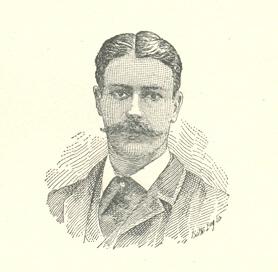
William Henry Krause Pollock
Few chessplayers today seem to know much about W.H.K. Pollock (1859-1896), yet in his time he was celebrated for his spectacular combinations and original style of play. He seldom came first in events, an exception being the Belfast, 1886 tournament, which he won with a clean score of 8/8, ahead of Blackburne and Burn. On the other hand, many of his individual games received high plaudits from the most demanding critics, as is shown by a brief compilation of comments by the then world champion, Steinitz:
A posthumous distinction for Pollock was being one of the very few players to be the subject of a biographical games collection in the nineteenth century. In 1899 Mrs F.F. Rowland of Kingstown, Ireland brought out Pollock Memories: A collection of Chess Games, Problems, etc. etc.
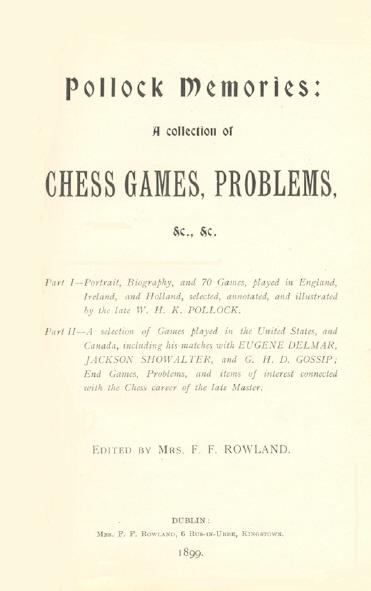
A copy lies open before us now, inscribed by her in 1903, and from it we cull some specimens of Pollock’s ingenious play. The focus here is on brilliancies, many from offhand games, which are seldom seen nowadays.
First, an attacking game peculiar in that, until the end, no white piece goes beyond the third rank:
William Henry Krause Pollock – James Mortimer1 e4 e5 2 Nc3 Nc6 3 Nf3 Bc5 4 Nxe5 Nxe5 5 d4 Bd6 6 dxe5 Bxe5 7 Bd3 Bxc3+ 8 bxc3 d6 9 O-O h6 10 e5 d5 11 Ba3 Ne7 12 f4 g6 13 Qf3 c6 14 Rae1 Be6 15 g4 h5 16 h3 hxg4 17 hxg4 Ng8 18 f5 gxf5 19 gxf5 Qh4 20 Rf2 Bc8 21 e6 f6 22 Ree2 Ne7 23 Rh2 Rg8+ 24 Reg2 Qe1+

25 Bf1 Bxe6 26 Rxg8+ Bxg8 27 Re2 Qh4 28 Rxe7+ Kd8 29 Qe2 Qg5+ 30 Bg2 Qxf5 31 Bd6 Qg6 and ‘White mates in four moves’ (though it is actually mate in three, with 32 Rd7+).
Anton Hvistendahl – William Henry Krause Pollock1 e4 e5 2 Nf3 Nc6 3 Bc4 Bc5 4 b4 Nxb4 5 c3 Nc6 6 d4 exd4 7 O-O d6 8 cxd4 Bb6 d5 Na5 10 Bb2 Nxc4 (Pollock: ‘This looks almost like a blunder, but it is not. The usual move is 10…Ne7. The idea of the text move is shown in the following variation: [10…Nxc4] 11 Bxg7 f6 12 Qa4+? Qd7 13 Qxd7+ Bxd7 14 Bxh8 Kf7. I have adopted it several times with success.’) 11 Qa4+ Bd7 12 Qxc4 f6 13 a4 Ne7 14 a5 Bc5 15 e5 fxe5 16 Nxe5 O-O 17 Nd3 b6 18 Nxc5 bxc5 19 Nc3 Rb8 20 Rab1 Rb4 21 Qe2 Ng6 22 Ba1 Rg4 23 g3 Nf4 24 Qd2 Qh4 25 Ne2 Nh3+ 26 Kh1 Bf5 27 f3
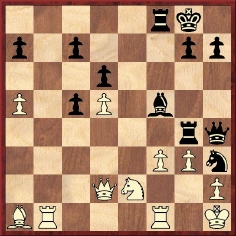
27…Bxb1 (Here Pollock wrote with understandable pride, ‘It is rare indeed that we meet with a case where one party, in a winning combination, sacrifices queen, rook and knight in three successive moves.’) 28 gxh4 Rxf3 29 Rxf3 Nf2+ 30 Rxf2 Be4+ 31 Rg2 Rxg2 32 Nc3 Rxd2+ 33 White resigns.
The configuration of a black bishop on e4, black rook on g2 and white king on h1 also arose in the game P. Rynd v W.H.K. Pollock, Nottingham tournament, 1886:

26…Be4 27 Qxf8+ Qg7 (Seldom has the only legal move been so attractive.) 28 Rf3 Bxf3 29 Bxg7+ Rxg7 mate.
The earlier moves were: 1 e4 e5 2 Nf3 Nc6 3 d4 exd4 4 Nxd4 Bc5 5 Nb3 Bb6 6 Be2 d6 7 O-O Nge7 8 Nc3 O-O 9 Na4 f5 10 Nxb6 axb6 11 exf5 Bxf5 12 c3 Be6 13 f4 Kh8 14 a3 Qe8 15 Nd2 Nd5 16 Ne4 Bf5 17 Nxd6 cxd6 18 Bh5 g6 19 Qxd5 gxh5 20 Bd2 Qg6 21 Rae1 Rae8 22 c4 Kg7 23 Bc3+ Kh6 24 Rd1 Re2 25 Qxd6 Rxg2+ 26 Kh1. Source: The Book of the Counties’ Chess Association by A.B. Skipworth (London, 1886), page 77.
A highly complex mating net:
A.C. Pearson – William Henry Krause Pollock1 e4 e5 2 d4 exd4 3 c3 dxc3 4 Bc4 Nf6 5 Nxc3 Nc6 6 Nge2 Bc5 7 Bg5 Bxf2+ 8 Kf1 Bb6 9 Nd5 Ng4 (It is recorded that Black had originally intended to play 9…Nxd5, realizing just after touching the knight that it would be fatal.) 10 Bxd8 Kxd8 11 Qd2 d6 12 Nxb6 axb6 13 Qg5+ Ne7 14 Qxg7 Rg8 15 Qd4 Nc6 16 Qd2 Nce5 17 Bd5 c6 18 Bxc6 Nc4 19 Qb4 Nge3+ 20 Kf2 Rxg2+ 21 Kf3 Bg4+ 22 Kf4 Bxe2 23 Rhg1 Rf2+ 24 Kg5 Ke7 25 Kh6 25 Rxh2+ 26 Kg7 bxc6 27 Qc3 Rf2 28 b3
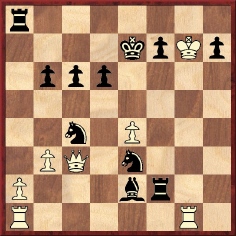
28…f6 29 e5 Nf5+ 30 Kxh7 Nxe5 31 Qh3 Bd3 32 Rae1 Nh6+ and wins.
If 33 Qxd3 Black wins with 33…Rh2. Even so, the conclusion is strange, and an inaccuracy in the final part of the game-score cannot be ruled out.

William Henry Krause Pollock
An insidious trap comes next. No sooner has Black fallen into it than he is exposed to a fierce and unexpected attack:
William Henry Krause Pollock – Francis Joseph Lee1 e4 e6 2 d4 d5 3 Nc3 Nf6 4 e5 Nfd7 5 f4 c5 6 dxc5 Bxc5 7 Qg4 g6 8 Nf3 Nc6 9 a3 Nb6 10 Bd3 Bd7 11 Bd2 a6 12 b4 Be7 13 O-O Na7 13 Rae1 Rc8 15 Nd4 Nc4
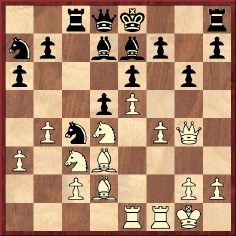
16 Bc1 Nxa3 17 Nxd5 exd5 18 e6 fxe6 19 Bxg6+ hxg6 20 Qxg6+ Kf8 21 f5 exf5 22 Re6 Resigns.
William Henry Krause Pollock – Alfred Rumboll1 e4 e5 2 Nf3 Nc6 3 d4 exd4 4 Bc4 Bc5 5 Ng5 Nh6 6 Qh5 Ne5
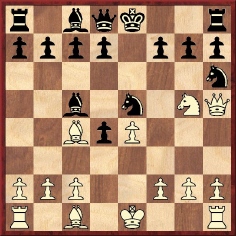
7 Ne6 Bb4+ 8 c3 Nd3+ 9 Bxd3 dxc3 10 Nxg7+ Kf8 11 Bxh6 cxb2+ 12 Ke2 bxa1(Q) 13 Rxa1 Qf6 14 Ne6+ Kg8 15 e5 Qxe6 and White mated in three moves.
The following game is an excellent illustration of pins.
N.N. – William Henry Krause Pollock1 e4 Nc6 2 d4 d5 3 exd5 Qxd5 4 Be3 e5 5 c4 Bb4+ 6 Nd2 Qe4 7 d5 Bg4 8 Nf3 O-O-O 9 a3
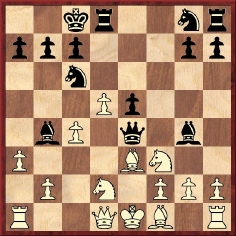
9…Nd4 10 Be2 Bxd2+ 11 Nxd2 Nc2+ 12 Kf1 Qf5 13 Bxg4 Nxe3+ 14 Kg1 Nxg4 15 f3 Qd3 16 fxg4 Qe3+ 17 Kf1 Rf8+ 18 Nf3 e4 19 Qe2 Qxe2+ 20 Kxe2 exf3+ 21 gxf3 Nf6 22 Rhd1 Re8+ 23 Kf2 Rhf8 24 Kg3 Re3 25 Rd4 Nd7 26 Rf4 Rxf4 27 Kxf4 Re2 28 h4 Rxb2 29 Re1 Kd8 30 Re3 Rc2 31 White resigns.
Another brisk execution:
John Morphy – William Henry Krause Pollock1 e4 e5 2 Nf3 Nc6 3 Bc4 Nf6 4 Ng5 Nxe4 5 Nxf7 Qh4 6 O-O Bc5 7 Nxh8 Nxf2 8 Rxf2 Qxf2+ 9 Kh1 d5 10 Bxd5 Bg4 11 Bf3 Bxf3 12 gxf3 Nd4 13 Qg1 Qxf3+ 13 Qg2 Qd1+ 15 Qg1 Qxg1+ 16 Kxg1 Nxc2+ 17 Kf1 Nxa1 18 White resigns.
Throughout his short career Pollock played an unusually high number of brilliant miniatures. Here are two more:
William Henry Krause Pollock – D. Kemper1 e4 e5 2 f4 exf4 3 Bc4 g5 4 Nf3 h6 5 Ne5 Rh7 6 O-O Nf6 7 Bxf7+ Rxf7 8 Nxf7 Kxf7 9 e5 Ng8 10 Qh5+ Kg7 11 b4 Be7 12 Bb2 Nc6 13 h4 Nxb4 14 hxg5 Bxg5
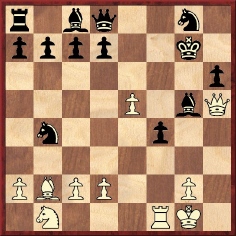
15 Rxf4 Bxf4 and White mated in eight moves.
At move 20 in the game below, Steinitz referred to the continuation as an ‘intellectual treat’.
William Henry Krause Pollock – Charles A. Moehle1 e4 e5 2 Nc3 Nf6 3 f4 d5 4 fxe5 Nxe4 5 Nf3 Bc5 6 Qe2 Nxc3 7 bxc3 O-O 8 d4 Be7 9 g3 c5 10 Bg2 cxd4 11 cxd4 Bb4+ 12 Bd2 Bxd2+ 13 Qxd2 Be6 14 O-O Nc6 15 Rf2 Rc8 16 Bf1 Na5 17 Bd3 Nc4 18 Qf4 h6 19 Raf1 f6
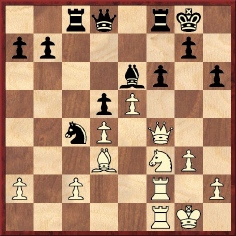
20 Nh4 Bh3 21 Nf5 Bxf1 22 Qg4 Kf7 23 Qxg7+ Ke6 24 Rxf1 Rc7 25 Ne7 f5 26 Rxf5 Rxe7 27 Qxf8 Qxf8 28 Rxf8 and wins.
Pollock defeated Steinitz in their only individual encounter (Hastings, 1895), a game which the victor annotated on pages 396-397 of the September 1895 BCM. Apart from their intrinsic interest, the notes are significant for being the source of Pollock’s most famous quote, ‘It is no easy matter to reply correctly to Lasker’s bad moves.’
Wilhelm Steinitz – William Henry Krause Pollock
Hastings, 12 August 1895
Giuoco Piano
(Notes by Pollock)
1 e4 e5 2 Nf3 Nc6 3 Bc4 Bc5 4 c3 (‘A favourite opening with Mr Steinitz in this tournament, in which he has beautifully demonstrated the efficiency of some new ideas contained in the last section of the Modern Chess Instructor.’) 4…Qe7 (‘Strangely enough, this valid old defence of the days of the Berlin ‘Pleiades’ has escaped all notice in the work referred to. A little story comes in here: Previous to the championship match between Steinitz and Lasker, at the request of the latter I played the defence to the Giuoco in a few off-hand games with him at the Manhattan Chess Club. I adopted this old defence without success, although Lasker admitted it was new to him. But I told him that Steinitz would play it against him and beat him if he did not play the attack differently. (It is no easy matter to reply correctly to Lasker’s bad moves.) Lasker good humouredly suggested that we submit the theoretical question to Showalter. However, he did not adopt this attack against Steinitz. The points of the defence are well shown in the present game.’) 5 d4 Bb6 6 a4 a5 7 O-O d6 8 d5 (‘This is, as usual, a questionable advance.’) 8…Nd8 9 Bd3 Nf6 (‘White’s ninth move was in order to prevent …f5. Without doubt Black should now have played for the advance by 9…g6.’) 10 Na3 c6 11 Nc4 Bc7 12 Ne3 Nh5 (‘If 12…cxd5 13 Bb5+, followed by 14 Nxd5. Nor can Black well castle, on account of 13 Nh4, threatening to establish a knight at f5.’) 13 g3 g6 14 b4 (‘Intending no doubt 15 dxc6 bxc6 16 b5, when it would be difficult to prevent the posting of the white knight at d5.’) 14…f5 (‘It is necessary for Black to attack, but the situation is a critical one.’) 15 Ng2 (‘15 dxc6 might have been tried as an alternative to prevent 15…f4, for if then 15…f4 16 cxb7, followed by Bb5+ and Nd5.’) 15…cxd5 16 exd5 (‘Preferable certainly seems 16 Bb5+ and if 16…Bd7 17 exf5, with the threat of Nxe5 or Bg5 presently.’) 16…Nf7 (‘In order to keep the queen’s bishop out.’) 17 Re1 O-O (‘Black has now an excellent position.’) 18 Nd4 Qf6 19 Nb5 Bb6 20 bxa5 Bxa5 21 Be2 Ng7 22 Bd2 Bd7 23 Rf1 Rac8 24 c4 Bb6 25 Be3 Bxe3 26 fxe3 Ng5 (‘Of course an attack by …g5 might be on the cards, but Black prefers the safer plan of …Ne4 and …Nc5, thus first securing the queen’s side.’) 27 Nc3 (‘Bad, as yielding the opponent a splendid opportunity for a king’s side assault.’) 27…f4 28 Qc2 (‘If 28 gxf4 exf4, attacking the knight.’) 28…f3 29 Nh4 (‘If the bishop moves, 29…Nh3+, followed by 30…fxg2+.’) 29…Nf5
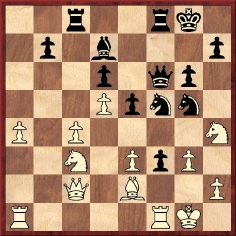
30 Rxf3 (‘If 30 Nxf5 Bxf5 31 Bd3 f2+, etc.’) 30…Nxf3+ 31 Nxf3 Nxe3 32 Qb1 Nxc4 33 Ne4 Qd8 34 Qxb7 Na5 35 Qb4 Bg4 36 Rf1 Bh3 37 Re1 Rb8 38 Qxd6 Qxd6 39 Nxd6 Rb2 40 Bd1 Rg2+ 41 Kh1 Rf2 42 Ne4 R2xf3 43 Bxf3 Rxf3 44 d6 Rf1+ 45 Rxf1 Bxf1 46 Kg1 Bd3 (‘Not 46…Bh3 on account of 47 g4.’) 47 Nf6+ Kf7 48 Nxh7 Ke6 49 Kf2 Kxd6 50 Ke3 Bc2 51 h4 Nc4+ 52 Ke2 Kd5 53 g4 Kd4 (‘The ending is a good one for the ‘gallery’; either the king or pawn must advance with immediate effect.’) 54 Nf8 Bd3+ 55 Ke1 Ke3 56 h5 gxh5 (‘Unnecessary; Black has a mate in four moves here.’) 57 gxh5 Be2 58 Nd7 Na3 59 White resigns.
It is instructive to compare the above notes with those by Pillsbury in the Hastings, 1895 tournament book (edited by Horace F. Cheshire) and, for a modern view, with the annotations of Colin Crouch in the 1995 monograph on the tournament which he co-wrote with Kean Haines. Pillsbury’s final note read, ‘Rather an amusing finish to a very interesting game’.
Who, then, was this man who gathered many scalps yet seemed primarily concerned with playing exquisite chess and regularly switched to what today would be called ‘hacking mode’? William Henry Krause Pollock was born in Cheltenham, England on 21 February 1859, the son of the Rev. William J. Pollock, and was educated at Clifton College and Somersetshire College, Bath. He studied for the medical profession and in 1882 qualified as a licentiate of the Royal College of Surgeons in Dublin. The same year his first published game and problem appeared in the unlikely setting of the Irish publication The Practical Farmer. As his chess strength developed he became a regular participant in British tournaments, attracting more attention for individual games than for his final standing. In 1889 he went to North America, settling in Baltimore, Maryland. He returned to England in 1895, and the October issue of that year’s BCM (page 414) described him as ‘a tallish good-looking fellow, courteous and pleasant, with poetic fancies both in chess and words, and who sits far back with arms resting on his knees and face almost touching the board, so that it seemed hardly possible for him to view the whole’. He was indeed an accomplished writer, although he left only one book, on the St Petersburg, 1895-96 tournament, jointly written with James Mason.
By then his health was already in grave decline, and as the obituary in the November 1896 BCM (pages 441-446) was later to report, ‘his friends were, however, much pained with his altered appearance, for signs were evident that the fell disease consumption was sapping his constitution’. Despite their appeals, he travelled to Montreal in early 1896, but stayed in North America for only a few months. In his final column for the Baltimore News, dated 8 August 1896, he bade farewell:
‘With very great regret, I have to announce that I am obliged to abdicate the chair of chess editor of this column. Serious and prolonged trouble of (at least) a bronchial nature has compelled my severance from my many delightful chess associations in this country, and I am due to sail for my paternal home in Bristol on this day, if perchance complete rest and home treatment may effect a restoration.’
Pollock died at 5 Berkeley Square, Clifton, Bristol on 5 October 1896. He was 37.
Never was his career better summarized than in the BCM obituary:
‘In the early days of Mr Pollock’s chess career, many people thought that in him a future English champion would be forthcoming, and the glories of Staunton and Blackburne be revived if not eclipsed. But this expectation was not fulfilled, and Pollock’s chess career must be regarded as a fragment rather than a whole. Yet it is a fragment no British lover of chess would willingly part with, for it is full of beautiful promise and adorned with many chess gems of rare brilliancy. With great gifts for the game he never attained the highest rank among the Masters, though it may be doubted whether any one of them excelled him in actual and potential genius for the game. In chess, however, he was an idealist. He worshipped at the shrine of the beautiful. He was not content to do what he could do easily and well, but strove after the absolute – his own perception of the perfect. He was above all an artist at the chessboard. It was not merely “the mate” that he pursued, but the beauty of the mate; he did not merely want to win, he always wanted to win in the most artistic manner. And in this pursuit of the ideal, the practical often suffered. Had he been more self-seeking, the chess world would have heard more of him personally. Neither nature nor art had fitted him to be his own trumpeter; he loved chess for its own sake, and not for the gain it might bring him, or the reputation he might attain by its means.’
As a concluding bonne bouche, there follows a very difficult problem composed by Pollock:

Mate in two
The position is illegal but provides a stiff challenge. Mrs Rowland’s book (page 158) reported that ‘this very peculiar and highly original problem was composed by Mr Pollock on the occasion of giving a lesson on the art of composing at the Baltimore Chess Association’.
Afterword: The above article first appeared at the Chess Café in 1998 and was included in A Chess Omnibus (pages 227-233). In the latter source we mentioned that Pollock Memories was reprinted by Moravian Chess, circa 2001.
The following footnote was given on page 232 of A Chess Omnibus:
In a letter to Walter Penn Shipley dated 23 June 1894 Steinitz referred to ‘the black ingratitude and daily hostility of drunken Pollock whom I had treated like a brother’. Source: The Steinitz Papers by K. Landsberger, page 188.
W.H.K. Pollock won a large number of brilliant games in his short life (he died in 1896 at the age of 37), but here is a spectacular loss against an obscure opponent:
William Henry Krause Pollock – T.C. Gibbons
London, March 1888
(Remove White’s queen’s knight)
1 e4 e5 2 Nf3 Nc6 3 Bc4 Bc5 4 b4 Bxb4 5 c3 Ba5 6 O-O Nf6 7 Qc2 O-O 8 Ba3 d6 9 d4 exd4 10 cxd4 Bb6 11 Rfd1 Bg4 12 e5 Bxf3 13 gxf3 Nh5 14 Qe4 Qg5+ 15 Kh1 Kh8 16 Bc1 f5 17 Qe2 f4 18 Rg1 Qh6 19 Bb2 Ne7 20 exd6 Nf5 21 d7 Rf6 22 d5 Rf7 23 Rae1 Be3 24 Bd3 Nfg3+ 25 fxg3 Nxg3+ 26 Rxg3 fxg3 27 Bc1 Rxf3 28 d6 Rf2 29 Qxf2 gxf2 30 Rxe3 Qg6 (‘Really an exquisite finish.’) 31 Bxg6 f1(Q) mate.
Source: BCM, November 1899, pages 474-475.
(2235)
A quote given on page 396 of Kings, Commoners and Knaves about Max Judd:
‘His style is classical, solid, profound, deeply analytical and uniformly cautious, often too farseeing to admit of brilliancy or dazzling speculative plunges into depths beyond mere moral ken. His knowledge of the openings is extensive, and he has not played enough “bad chess” to weary of the beauties of the strongest and most familiar methods of début, consequently we do not find him indulging in freakish innovations, “cork-screw” gambits, weak early moves adopted for the sake of stimulating his genius to fight against self-inflicted odds, Balaclava charges, double gambits, “rat-hole” defences, improvisations or empiricisms. He is a beautiful endgame player, and there is plenty of “Polish” in his finishing and finished touches.’
Source: W.H.K. Pollock, BCM, June 1892, page 241.
The quote is from a particularly rich article ‘Judd and Showalter’ (biographies and games) by Pollock on pages 237-248 of the June 1892 BCM.
From the review of Pollock Memories in the March 1900 BCM (page 97):
‘As it has only just come into our hands, we have not had time to play through the 145 games, with a view to ascertaining their accuracy of record, but great care seems to have been taken as to this matter throughout the whole work, and as there is no list of errata, we presume there is nothing to correct.’
(Kingpin, 1999)
From an article by O.C. Müller, on page 439 of the October 1932 BCM:
‘Another chess amateur at [Purssell’s] was a Mr Manley, proprietor of several public-houses in the City and the West End. He generally patronized Pollock and Mason; and becoming acquainted with me also, he asked me one day whether it was right to develop the pieces in the opening of the game! I hesitated to make a reply, but remarked at last that Pollock and Mason, when they said so, must be right, whereupon Mr Manley retorted: “You are wrong, and I will tell you why. As soon as I develop the pieces, Pollock and Mason take them off”.’
(Kingpin, 2000)
Olimpiu G. Urcan (Singapore) sends a photograph of J.N. Babson and W.H.K. Pollock:
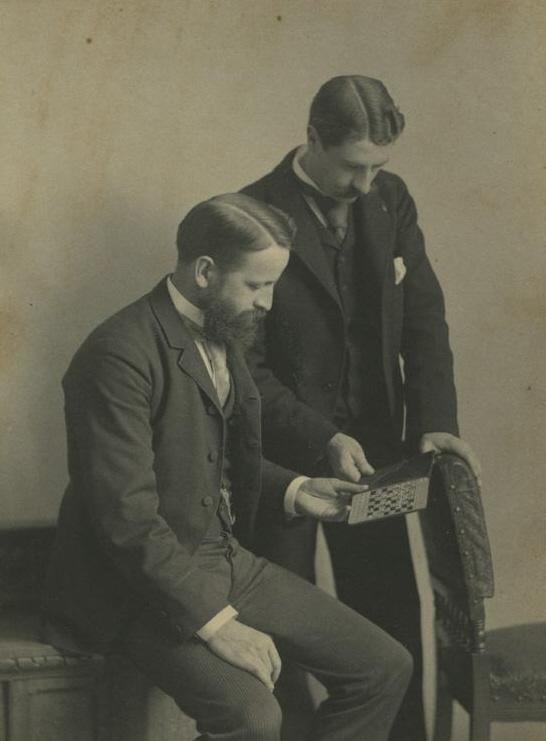
The reverse is inscribed by Babson to James D. Séguin:
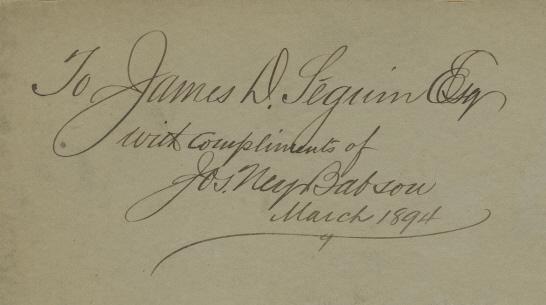
(8484)
From page 33 of London Feb/Mar 1886 and Nottingham 1886 by A.J. Gillam (Nottingham, 2007):
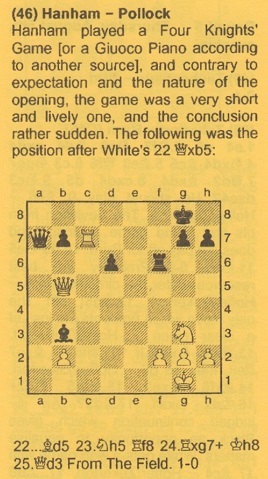
Since ‘The Field’ and ‘another source’ are the sole information offered, and there is no mention of the straightforward mate in four (22...Qxf2+), further details will be appreciated.
(8901)
We commented in C.N. 8901 that, in addition to the inadequate sourcing, no mention was made of a straightforward mate in four (22...Qxf2+).
The reason can now be given: the queens’ colours were inverted. The full score was published on page 53 of the Irish Chess Chronicle, 1 August 1887:
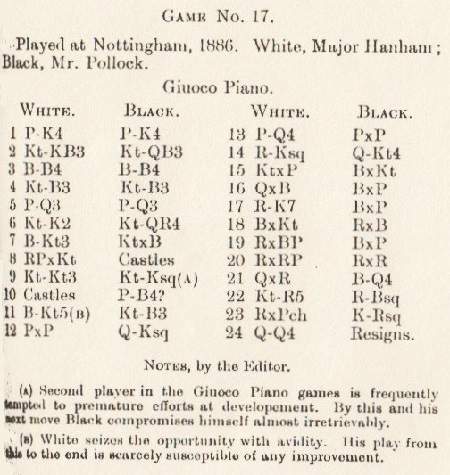
1 e4 e5 2 Nf3 Nc6 3 Bc4 Bc5 4 Nc3 Nf6 5 d3 d6 6 Ne2 Na5 7 Bb3 Nxb3 8 axb3 O-O 9 Ng3 Ne8 10 O-O f5 11 Bg5 Nf6 12 exf5 Qe8 13 d4 exd4 14 Re1 Qb5 15 Nxd4 Bxd4 16 Qxd4 Bxf5 17 Re7 Bxc2 18 Bxf6 Rxf6 19 Rxc7 Bxb3 20 Rxa7 Rxa7 21 Qxa7
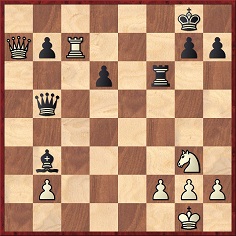
21...Bd5 22 Nh5 Rf8 23 Rxg7+ Kh8 24 Qd4 Resigns.
(9787)
The short game Pollock v Hall was discussed in C.N. 9185.
Page 5 of Chess Quotations from the Masters by H. Hunvald (Mount Vernon, 1972) gave Pollock’s above-mentioned observation ‘It is no easy matter to reply correctly to Lasker’s bad moves’ but labelled the source as ‘Anonymous’.
Just received: W.H.K. Pollock. A Chess Biography with 523 Games by Olimpiu G. Urcan and John S. Hilbert (Jefferson, 2017).
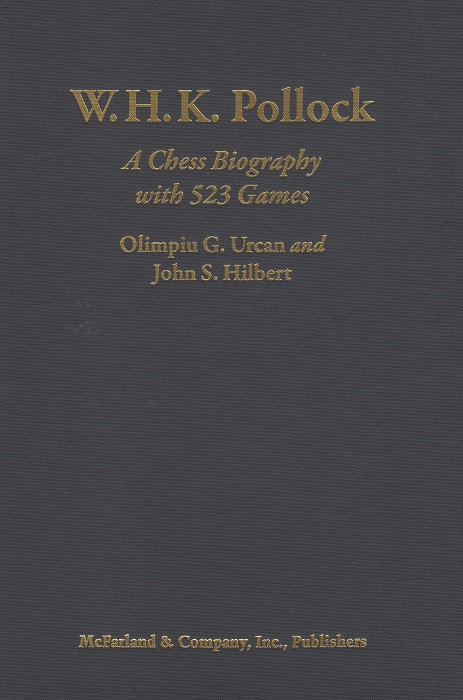
For now, we merely show an extract from page 2 of the Morning Post, 14 May 1900:
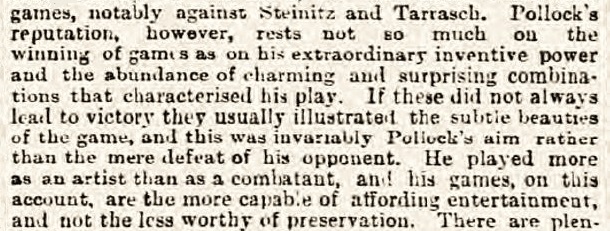
On page 466 the co-authors quote this passage, praising it as ‘perhaps best summing up Pollock’s finest traits as a chess player’.
A portrait from opposite page 46 of the Hastings, 1895 tournament book:
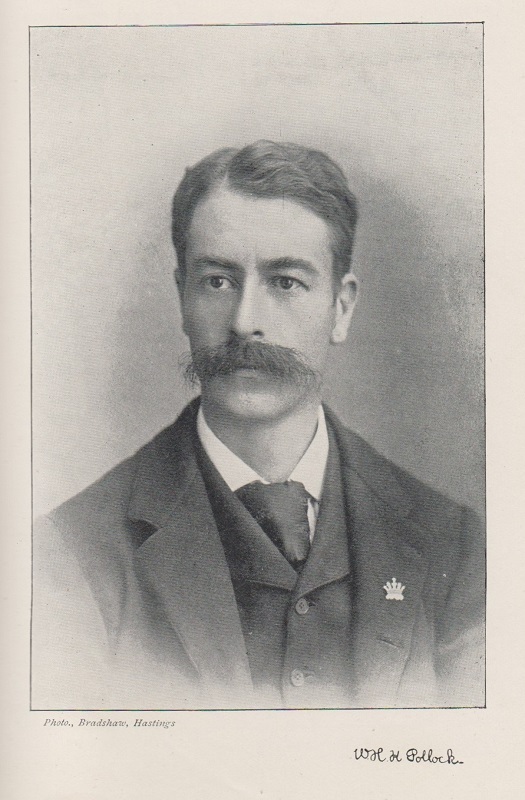
(10459)
The Pollock book is one of the finest in the entire McFarland catalogue.
Olimpiu G. Urcan (Singapore) writes:
‘On the topic of similar photographs (C.N.s 5372, 5405, 6709, 7429 and 7724), page 193 of the recent Pollock biography reproduces a picture of him from page 138 of Sportfolio: Portraits and Biographies of Heroes and Heroines of Sport and Pastime (London, 1896). Our caption states that the photograph, by George Bradshaw, is also featured in the Hastings, 1895 tournament book edited by Horace F. Cheshire. In fact, the Pollock portrait given opposite page 46 of the latter work (shown in C.N. 10457) is slightly, almost imperceptibly, different, although undoubtedly taken on the same occasion:
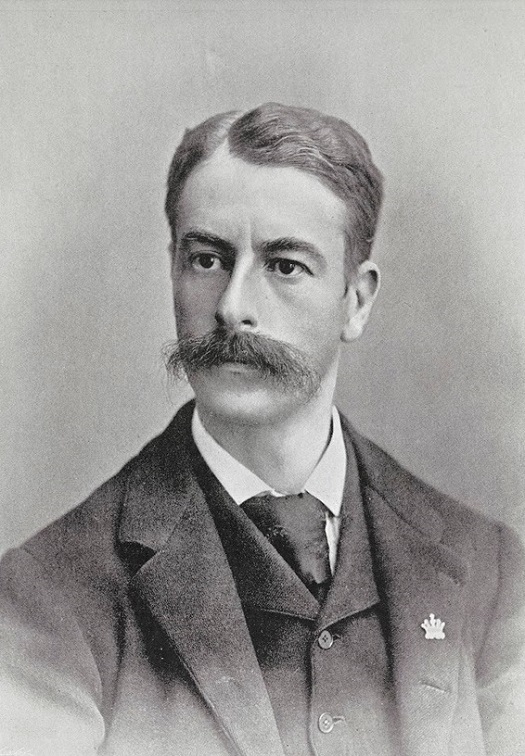
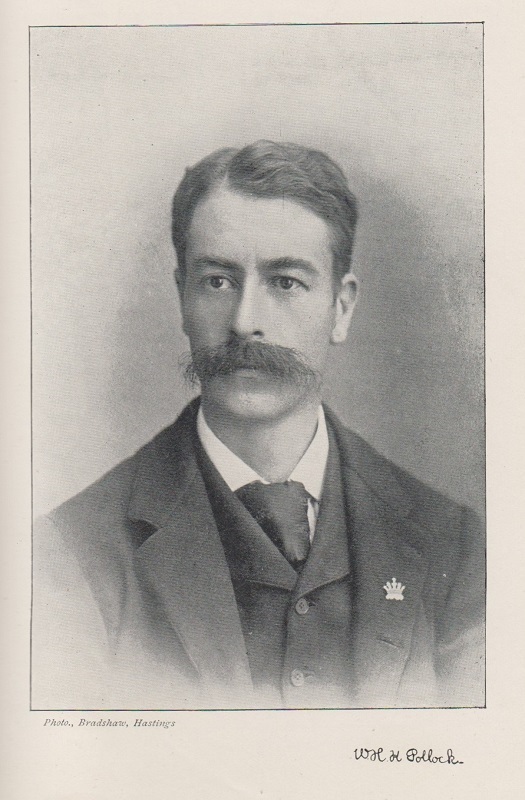
Our book also has photographs of Chigorin (page 58) and Tarrasch (page 185) taken during the Hastings, 1895 tournament by William James Donald. They are different from the Bradshaw photographs opposite pages 121 and 60 respectively of Cheshire’s book.
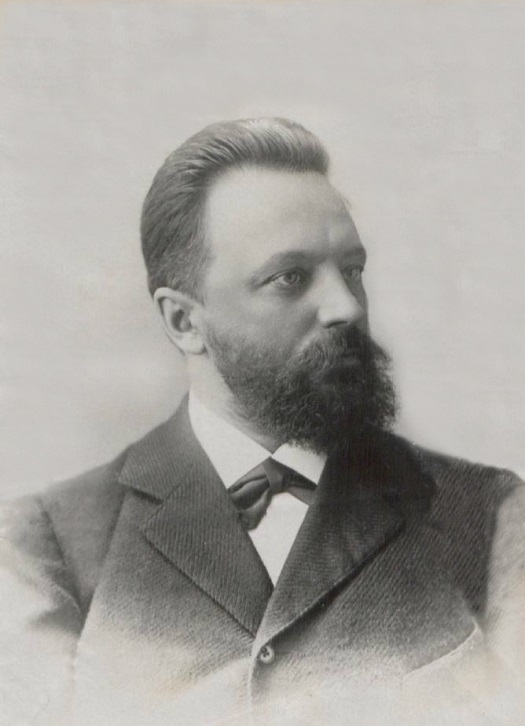
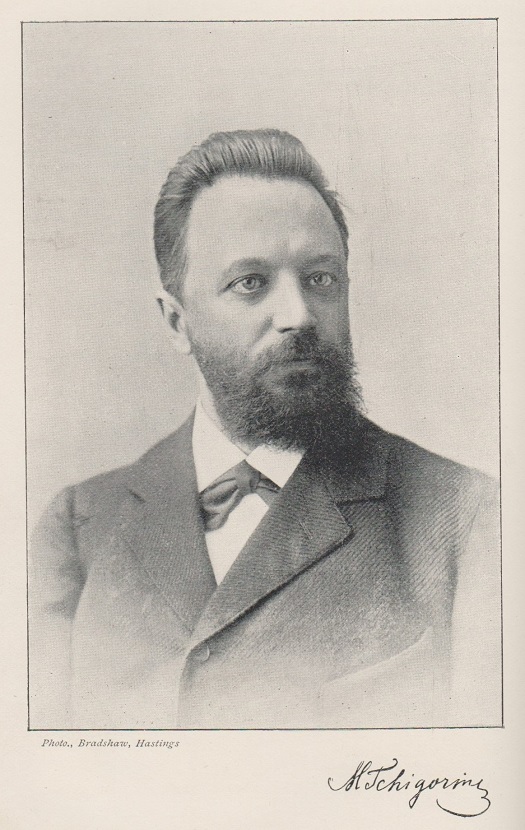
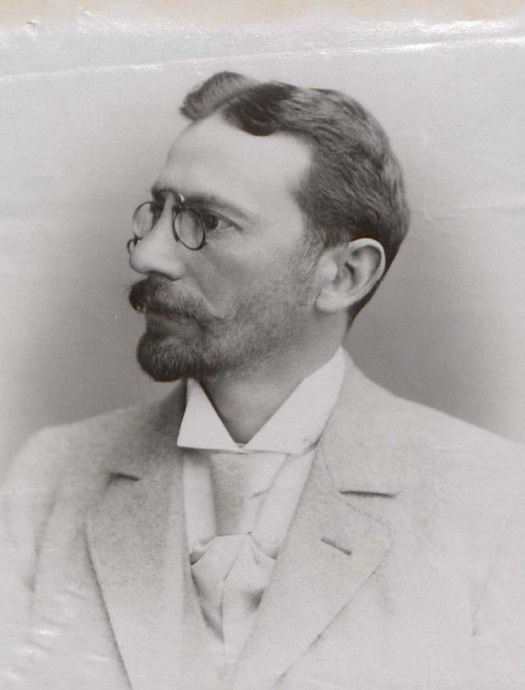
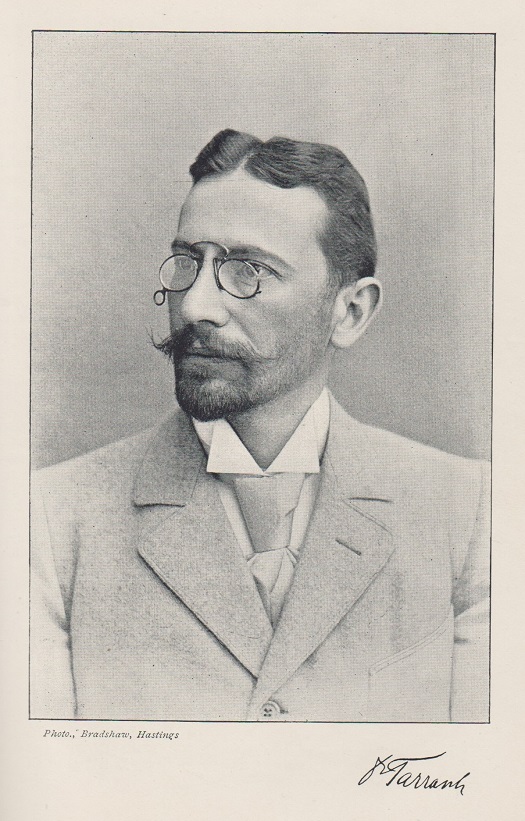
On the other hand, Donald’s photographs of Steinitz and Pillsbury in the Pollock volume (pages 181 and 189) are identical to the Bradshaw photographs in the tournament book. Can further versions of such 1895 photographs involving the Hastings participants be found?’
(10463)
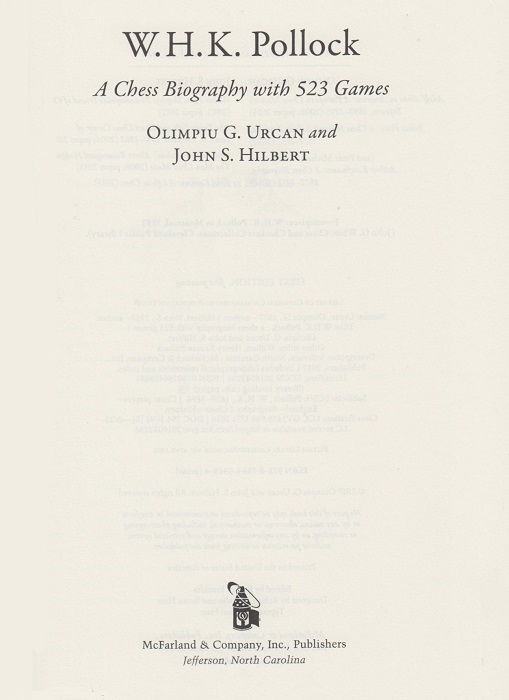
From the recent book W.H.K. Pollock. A Chess Biography with 523 Games by Olimpiu G. Urcan and John S. Hilbert (C.N. 10459) we note some matters of relevance to C.N. items:
Chigorin’s height has been discussed in C.N.s 1106, 7879 and 9718. A footnote on page 127 of the book has a quotation from the Brooklyn Standard-Union, 2 April 1892:
‘Mr Chigorin is about five feet seven inches in height, with very dark hair and fair skin; high forehead, and with a general air of prosperity about him that is quite pleasing to chess players. He has a bright, kindly eye that looks directly to the questioners and his handshaking has that warm, brotherly pressure that draws one to him.’
This may be compared with the description on page 186, cited from the October 1895 BCM:
‘... M. Chigorin, the Russian master, of moderate height, well-knit frame, dark olive complexion, high round forehead, jet black hair and most penetrating eyes, very quiet and affable in manner, with hands clasped and the fore part of the arms resting on the table, and whose slight trembling of the right leg resting on the toes indicates the excitement of mind.’
From an annotation by Pollock in 1883 (page 209):
‘The position is very peculiar, and well illustrates Steinitz’s rule, “When you have found a very good move, don’t make it, but look for a better one.”’
Page 413 has an 1894 game annotation by Pollock which reads:
‘Following Steinitz’s principle: “When you have found a good move, don’t make it but look for a better one.”’
With regard to this ‘rule’, see Chess: ‘When You See a Good Move ...’.
An 1889 note by Pollock on page 333:
‘We base this form of development on the principle that “counter-attack is the soul of defence”, v. Anderssen vs. Morphy, games II and IV of match.’
The quote has been added to The Soul of Chess.
Concerning the ‘Chigorin Variation’ 1 e4 e6 2 Qe2, page 395 of the book gives the game Pollock v Halpern, Staten Island, August 1893, with this note after White’s second move:
‘A seemingly new idea by Pollock which was later used extensively by Chigorin in important matches and tournaments. In annotating the second game of the Chigorin vs. Tarrasch 1893 match, in his 19 November 1893 Baltimore Sunday News column, Pollock wrote about 2 Qe2: “Introduced by the Editor. See News 19 August. The object is to stop …d5. Mason calls it ‘but a harmless violation of principle, yielding a strange game, a confusion of the Sicilian, Fianchetto and French.’” While annotating the same game for the 25 October 1893 New York Sun, Chigorin said nothing about 2 Qe2. However, the newspaper columnist remarked: “Chigorin introduced a novel move in the French game, namely 2 Qe2, and as a matter of course the game becomes doubly interesting, inasmuch as it might completely alter the theory of this defence. Chigorin in his notes, taken especially for the Sun, does not make any remarks regarding the move.” The 27 October 1893 edition of the Sun published the following from Pollock: “To the editor of the Sun: Sir: The move of 2 Qe2 in the French defence, which in your admirable report of today is described as novel and introduced by Chigorin, was played by myself against J. Halpern in the recent Staten Island cup tournament. Yours respectfully, W.H.K. Pollock.”’
Page 450 quotes from an article by Pollock in the Christmas 1893 issue of the BCM:
‘It was on Staten Island that I invented and discovered the move of 2 Qe2 in the French, since “spoiled” by the hibernations of the bear in the St Petersburg match. My old Richmond (Va) friend of the Daily News, and other London players, decry the move as inducing, instead of seducing the “Frenchman” to reply …d5.’
Page 473 has a book review by Pollock in the Baltimore Sunday News, 23 September 1893 which provides an addition to Chessy Words:
‘A perusal of this painstaking work would repay any lover of the game, but something written in original style, even if not original in premises, will always go further than compilations from books. A chess-smith, too, must go into the forge and strike the iron on its white-hot places; he has no time to forage around for pieces of old metal to burnish up and weld into marketable shape – they are too thin and twisted and torn for use.’
(10484)
See also The Chess Masters of To-day by Leopold Hoffer.
To the Chess Notes main page.
To the Archives for other feature articles.
Copyright: Edward Winter. All rights reserved.